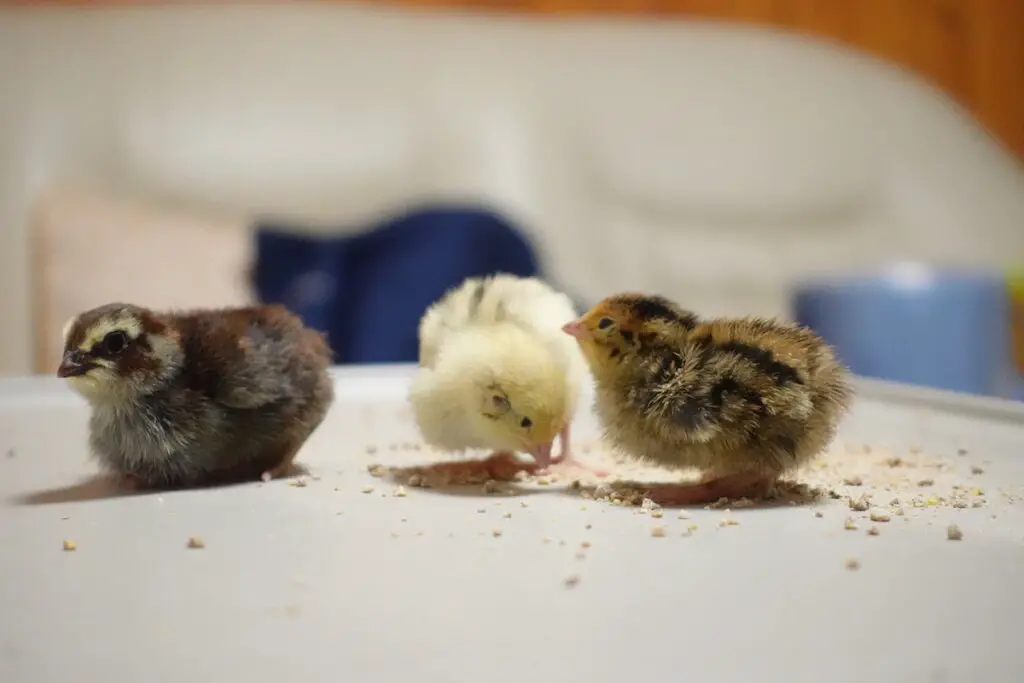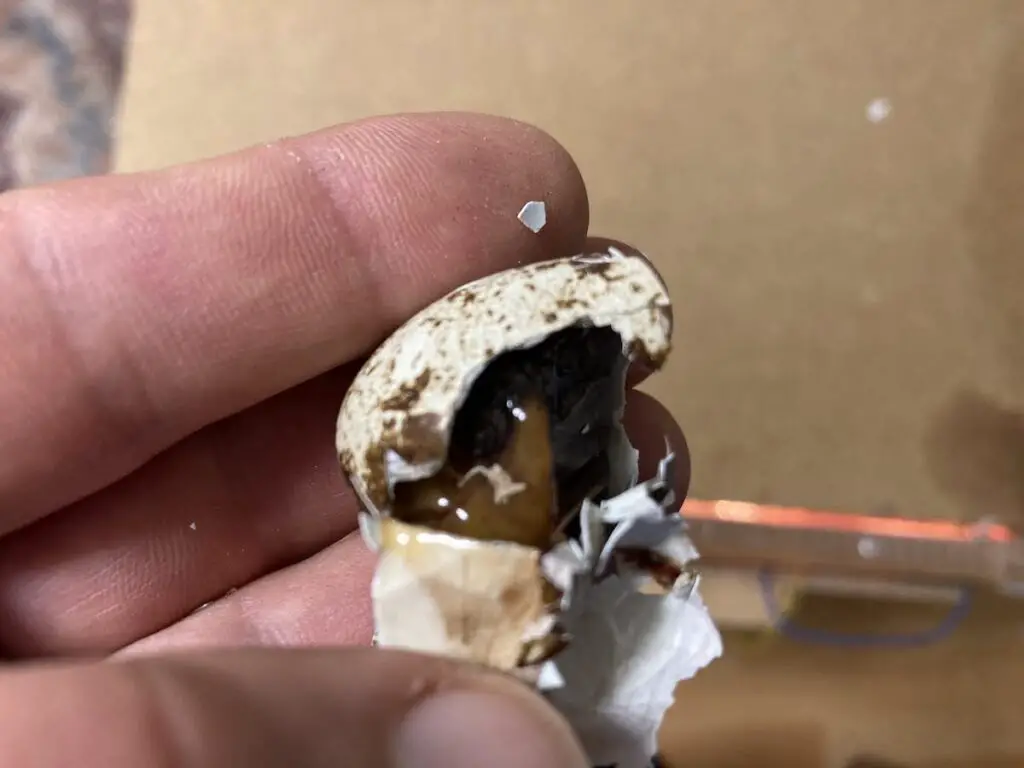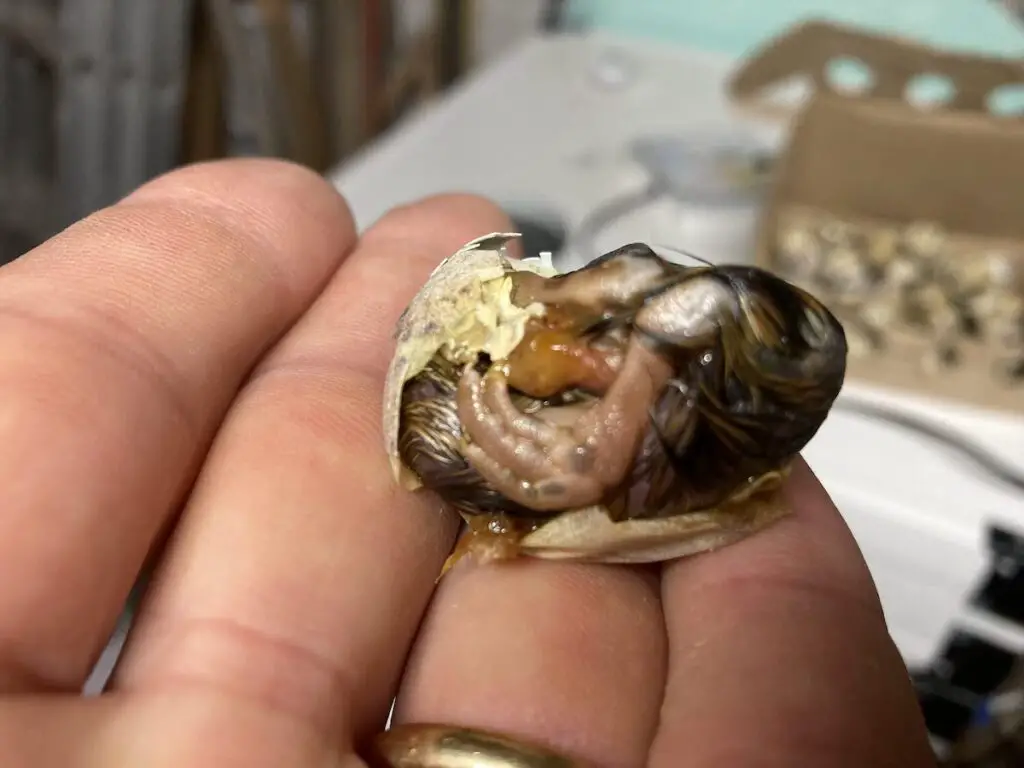For me, self-sufficiency started with some quail eggs and an incubator. I was excited about raising my own birds for eggs and their meat, but I was really nervous the first time I turned on the incubator, and I didn’t know what I could expect in terms of hatch rates. Today, I am confident that if I do things right, I will get a good hatch rate.
The average hatch rate of quail is between 50% and 90%. If the hen-to-rooster ratio is good, the eggs are fresh, and the incubator is reliable both for temperature and humidity, and the eggs are turned regularly until day 14, the hatch rate can be as high as 90-100%. If these conditions aren’t optimal, the hatch rate can be as low as 0-10%.
Let me share with you what I have learned and show you how each factor influences your hatch rate through some concrete numbers.
Hatch rate calculation and factors
If you want excellent hatch rates, you can’t rely on your quail hens to brood their eggs. They are not reliable brooders. You must use an incubator instead.
Learn how to raise your own quail and have an unlimited supply of eggs and meat.
The hatch rate is calculated by dividing the number of quail that hatch by the number of eggs that went into the incubator.
For example, if you place 10 eggs in the incubator and 8 hatch, you have an 80% hatch rate.
The eggs that don’t hatch may be infertile eggs or quitter eggs.

Infertile eggs are laid by the quail hen without being fertilized. Unfortunately, you can’t tell whether a quail egg is fertile before you place it in the incubator, but only upon candling after it spent several days in the incubator. On day 14, it is very easy to tell them apart. If you’re interested in how the candling process works, you can read this article I wrote about it.
Here are the numbers from my first batch. I purchased the eggs from a local breeder. I collected the eggs personally and placed them in the incubator 48 hours after they were laid.
| Incubated | 47 |
| Quitter | 2 |
| Infertile on candling day | 6 |
| Hatched | 39 |
| Killed | 2 |
| Hatch rate | 82.98% |
| Survived | 37 |
| Survival rate | 94.87% |
Here are the numbers from my second batch. I purchased the eggs from a breeder online and had them delivered via post. They went into incubation approximately 72 hours after being laid. You can see just how different they look. Among other variables, a strong contributing factor to a lower hatch rate may have been the handling of the box.
| Incubated | 62 |
| Quitter | 7 |
| Infertile on candling day | 14 |
| Hatched | 41 |
| Killed | 2 |
| Hatch rate | 66.13% |
| Survived | 39 |
| Survival rate | 95.12% |

Improving chances of egg fertility
Quail hens can lay eggs even if they aren’t kept together with roosters, and they will lay eggs. These eggs are perfectly fine for consumption, but since they aren’t fertilized, they aren’t going to hatch when you place them in the incubator.
Quail eggs that you buy at your local store are probably kept for egg production, and they aren’t kept with roosters. The likelihood of them being fertile is very slim. If you buy eggs at the local market, you can ask the seller if the quail hens are kept with roosters. If so, the chances of them being fertile are quite high.
One of the surest ways of getting fertile quail eggs is by buying eggs from a breeding farm. They specialize in providing fertile eggs, which is why they not only keep their quail hens with roosters, but they pay attention that the breeding stock is fresh and the hen-to-rooster ratio is optimal (about 4-5 hens per rooster).
The other sure way to have fertile eggs is by keeping your own breeding stock and paying attention to the same. If you’re finding that your quail eggs are not fertile, you may have too few roosters, or your breeding stock may be too old. Even though it sounds contradictory, too many roosters can lead to infertile eggs. If roosters are too busy fighting each other and beating up the hens, the fertility rate of the eggs may decrease.
To get a good egg fertility rate with your own stock, follow these good practices:
- Keep your breeding stock separate from your egg-producing hens
- Keep one rooster for every four-six hens
- Keep a maximum of 15 birds per cage
- Provide a good layer feed to your quail
Reduce chances of quitter eggs
A quitter egg is one that starts developing into a quail embryo, but the process stops along the way. This can happen at various stages and for various reasons.
Handling
Whether you purchase eggs for incubation or you collect them from your breeding stock, you must handle them with care. Quail eggs are small and they may crack easily. Cracked eggs shouldn’t go into the incubator. I inspect each egg and discard those that have cracks on them.
Temperature
Some quail embryos die because of inconsistent temperatures. This can occur because of a malfunction of the incubator or because you are too curious and open the lid of the incubator too often. Some incubators are better at providing a consistent temperature throughout the incubation process and in every part of the incubator.
You can purchase two additional control thermometers to keep an eye on the consistency of the temperature. Don’t obsess with this, but check on it randomly every few days to ensure the temperature stays the same inside. Good incubators have holes on them where you can insert the thermometer. The reason why you should get two, is because if you don’t get the same reading from the incubator’s built-in thermometer and the control thermometer, you don’t know which one is wrong.
Ambient temperature
To keep the temperature consistent, pay attention to the temperature in the room where you incubate the eggs.
If it’s too cold, and your incubator has plastic walls without insulation, chances are that eggs placed near the walls are going to be slightly colder than those placed in the middle, and can’t develop properly. Incubators with properly insulated walls (styrofoam or sandwich panel) are good at keeping out the cold.
My incubator is a semi-professional model from a well-known manufacturer in Hungary that makes incubators for zoos and conservatories. I have had great success even when incubating in a cold garage with a temperature of 40 degrees Fahrenheit (5 degrees Celsius). This would be impossible with a cheap plastic incubator.
Avoid placing the incubator exposed to sunlight also because the rays of the Sun get trapped and cause the temperature to skyrocket, leaving the eggs inside of it cooked.
Humidity
Some embryos die because the humidity level is not high enough in the last few days. Initially, I found it strange that I had to raise the humidity level to above 70% after the eggs went into lockdown on day 14, but it makes a lot of sense. With a higher humidity level, the eggshell becomes softer and, therefore, easier for the baby quail to break.
Some high-end incubators control the humidity level throughout the entire incubation process but beware of cheaper models that offer accurate humidity readings. If an incubator has all the bells and whistles and the price seems too good to be true, it’s best to stay away from it.
My incubator doesn’t have automatic humidity control, but the manual tells me exactly how much water needs to be added to get the desired value. Still, I find that I need to top up the water reservoir when I remove the first batch of chicks because their tiny feathers fall on the surface of the water and create a thin layer, and this prevents the water from evaporating, causing the humidity level to drop significantly. I have learned this through trial and error.
Overcrowded incubator
Too many hatched quail may negatively affect the hatching of other quail. When quail hatch, they become very active within a few hours. If you have a bunch of them in the incubator, they chirp and run around exploring the area. They are remarkably agile. They climb and jump on each other, and eggs that still haven’t hatched get kicked about like footballs. This can negatively affect the hatch rate.
It’s good practice to remove the quail chicks from the incubator when they are dry, which you will know by looking at their feathers. If they are still wet and look like they just had a shower, they need more time in the incubator. However, if they are fluffy, they are ready to come out and be placed into the brooder.
Sometimes you will find baby quail that have started to hatch but seem to be stuck. It’s quite tempting to give them some assistance by breaking the eggshell and helping them come out. I have done this a few times, but these chicks always ended up dying or having some deformity. It’s always best to let nature take its course.
Turning
You can also improve your hatch rate by turning the eggs several times each day to avoid the chicks getting stuck to the eggshell as they grow. Most modern incubators offer this option by default. Some, such as the Nurture Right 360, rotate the eggs on a platform, while others have built-in cradles that tilt the eggs 45 degrees left or right periodically. You can also turn the eggs manually. I read about quail owners who get good hatch rates despite rarely or never turning the eggs, but this is the exception to the rule.
Factors you can’t influence
Some embryos die spontaneously because of some genetic defect. There’s nothing you can do about this. It is a part of hatching eggs.
I have had quail die on the first day of incubation as well as just before hatching.


Some quitter eggs may just be late bloomers. I analyze every single egg that doesn’t hatch. I open the infertile eggs and the quitter eggs too, to learn to identify them better in the future. It’s very rare for quail eggs not to hatch by day 19, but it can happen occasionally.
Recently, I turned off the incubator and checked the eggs that hadn’t hatched. They had died at various stages of development, but I found one still alive and a few days away from hatching. It would have hatched within 2-3 more days. Of course, it didn’t survive my opening the egg.
Improve survival rate
Another important thing to consider is the survival rate, which tells you what percentage of the hatched quail survive. Even if you get a fantastic hatch rate, but your survival rate is bad, you’re still in a bad place.
Some baby quail die because they choke on something, and others die because of cold or other reasons. I wrote an entire article about why your baby quail may be dying (you can read it here), and another one about how to care for your baby quail in the first days.
Happy quailing!
